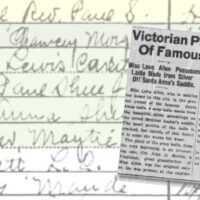Whether you’ve had a longtime romance with old buildings or are a newcomer to the world of historic preservation, some basic guidelines and resources for understanding and caring for historic architecture can be a big help.
What makes a building historic?
It’s old … right? You may be surprised to learn that there is a hard-line answer for this. The National Register of Historic Places draws the line at 50 years. This means that buildings built in 1973 are now eligible for the National Register. The Register has some additional criteria for determining if a building is eligible for listing: architectural significance, association with a noteworthy person or event, the likelihood that a place has important information yet to yield, and integrity. More on integrity later.
- SUBSCRIBE: Sign up for our newsletters
Just because an old building isn’t eligible for the National Register doesn’t mean it’s not historic or worthy of saving. Many historic buildings that wouldn’t make it into an architectural textbook and have no ties to Benjamin Franklin are well beloved by the people who have, do, and will use them. These buildings better their neighborhoods by their design, craftsmanship and continuity. They may do this individually or in groups as neighborhoods or streetscapes. In other words, they help create a sense of place.

Speaking the lingo
You may have noticed historic preservation has some sneaky terminology. It takes words that seem straight-forward, like historic, and gives them technical definitions. Here are some important terms:
This list, maybe with the exception of “reconstruction,” may at first glance seem synonymous. But don’t be fooled — these four terms are mutually exclusive and create a spectrum for talking about the care of old buildings. They are four of the foundational terms of historic preservation. The Secretary of the Interior, the de facto head of preservation in America, uses these four terms in a list of standards for the treatment of historic buildings.
Preservation: On the spectrum of philosophies for caring for old buildings, preservation is the strictest of the four terms. It implies that a building’s historic materials are basically intact and will be conserved “without extensive repair or replacement.” No ripping out walls or plaster here, just stabilizing the existing historic materials and maintaining.
Restoration: When preservationists talk about a restoration project, they are implying the return of a building to a specific point in time. If there are additions or elements that came after this date, a true restoration requires their removal. Restoration often calls for the installation of new, historically appropriate materials, like paint, wallpapers and carpets, to match the building’s known appearance at said point in history. Restorations are most commonly done in buildings used as museums.
Rehabilitation: Rehabilitation is the most lenient of the philosophies. It is generally intended for buildings used as homes or work spaces. While historic homeowners are expected to be sensitive to historic materials, rehabilitation acknowledges that we are modern people updating old buildings for modern use. We need conveniences like kitchens, bathrooms and air conditioning.
Reconstruction: This term is mostly used on historic sites. It entails the physical reconstruction of buildings or parts of buildings that no longer exist.
Most projects blend elements of these four philosophies, while primarily sticking to one. Almost all projects that receive public money or grants require the physical work done to the building to adhere to the Secretary of the Interior’s Standards.
Here are some other terms worth knowing:
Integrity: This word is frequently thrown around by preservationists and has a meaning completely separate from when it’s used in normal life. “The old post office has excellent integrity. It still has the original P.O. boxes!”
Integrity in old buildings refers to the wholeness of its historic form and materials. Aspects like original windows, doors, plaster and floor plan all contribute to an old building’s integrity. All four of the Secretary of the Interior’s Standards stress the importance of saving historic materials while updating or maintaining a building because these are what give the building its integrity as a historic structure.
Built environment: Aspects of the landscape that are built or altered by people. This extends beyond just buildings to include infrastructure and landscaping.
Brick-and-mortar: A synonym for hands-on work.
Vernacular: Vernacular architecture describes buildings that are unique to a specific region or locale. They’re almost never designed by architects and can rarely be described as high-style. Vernacular buildings are really special because they tell a unique story about a specific place. Tobacco barns and warehouses are perfect examples of vernacular architecture in Western Kentucky.
Stewardship: One of the most important concepts in historic preservation is stewardship, the idea that we are taking care of the historic built environment so that people not born yet can one day enjoy it. We own nothing, we are stewards of everything.
Knowledge is power
Now that you speak the language of preservation, let’s get to the meat and potatoes. One golden rule governs all treatment of historic buildings: do no harm. But what if you do harm without knowing it? Many owners or would-be owners of historic buildings are daunted by this fear. Historic building materials seem fragile and mysterious.
As a steward of a historic building, educating yourself about historic building materials is vital. A great place to start is with the National Park Service’s preservation briefs, 50 topical guides on brick-and-mortar aspects of historic buildings. These are comprehensive and broad-ranging, covering topics from repairing plaster to improving energy efficiency in old buildings. The preservation briefs inform on the usage history and properties of building materials, as well as giving instruction on treatments, repairs, and maintenance.
At the end of each brief is a reading list with additional sources on each topic. Just by reading the preservation briefs, a historic building owner can gain the necessary foundational knowledge to speak with contractors and know whether a suggested repair is safe or probably not a good idea.
The National Park Service also has a video series that covers preservation topics on the National Center for Preservation Technology and Training website. These tend to be geared more toward a professional audience but can still prove helpful.
Preservation Kentucky, a preservation nonprofit, also provides excellent educational materials. These tend toward culture and history, not brick-and-mortar treatments. They are, nevertheless, Kentucky-based and give good regional context for historic buildings and their preservation.
Good news: You’re not in this alone
Individuals and agencies exist to help historic building owners make the right choices.
Every state has a historic preservation office. Kentucky’s is the Kentucky Heritage Council. It is a free resource that provides guidance not only to historic building owners, but to people who own or oversee historic cemeteries and archaeological sites as well. The council is the governing body for the National Register of Historic Places in Kentucky.
In the private sector, Preservation Kentucky is a nonprofit that advocates for historic preservation. It provides educational and rehabilitation grants (mostly to nonprofits) and has a number of publications about Kentucky culture and history.
There are also preservation consultants and contractors in the region who are available for hire.
Money matters
No matter how much you know, it’s impossible to do work without money.
While several nonprofits and governmental agencies give financial assistance to owners of historic buildings, it is much easier for educational and nonprofit organizations to get financial assistance for rehabilitation projects than for individuals.
One of the most accessible sources of money for owners of historic homes is through tax credits. The Commonwealth of Kentucky and the U.S. government both have a historic preservation tax credit program. While historic building owners have to spend to earn this money, it does put cash directly back into their pockets.
In Kentucky, these funds are available to both owners of historic homes as an up to 30% tax credit on money spent on rehabilitation, as well as to owners of historic income-producing buildings at up to 20%. Federally, owners of historic, income-producing buildings may qualify for a 20% rehabilitation tax credit. The Kentucky Heritage Council administers both programs.
Plentiful grants exist for nonprofit organizations rehabilitating historic buildings. A number of these can be found through Preservation Kentucky’s website.
The National Trust for Historic Preservation also provides grants ranging from $2,500 to $5,000 for historic preservation projects spearheaded by nonprofit organizations. These are highly competitive.
The National Park Service’s Save America’s Treasures grant provides $125,000 to $500,000 grants for nonprofits, educational institutions, federally-recognized American Indian tribes, and state and local governments for brick-and-mortar work.
Grants and incentives for individual owners are far more difficult to procure. For those who own a building in Hopkinsville’s Downtown Renaissance District, the city provides a 50/50 matching grant incentive program for exterior improvements.
It takes creativity, persistence and hard work caring for our historic built environment. I’ll be telling the stories of one historic home in Hopkinsville that is deserving of these efforts when we launch the column Brick and Mortar Monthly. Look for the first installment later this month.






